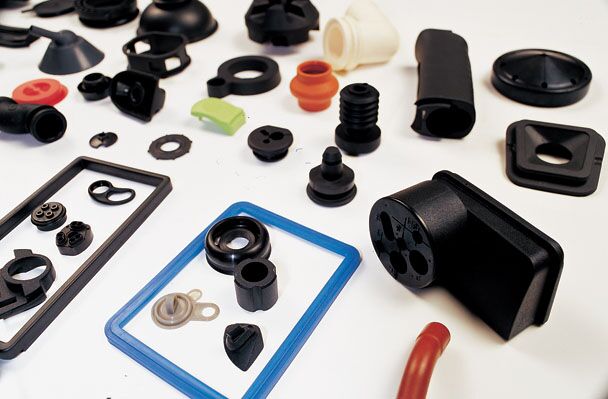-
National consultation hotline:
13590252450 / 18676388050


Time:2024-05-09 Preview:1
Hello everyone, I am the editor. Today I will introduce you to rubber products. The following content is compiled by the editor and the relevant content is for reference only.

Building rubber productsSynthetic rubber products are a kind of high molecular polymer in a highly elastic state at room temperature. Rubber products can be made into rubber after vulcanization, and rubber can be made into various rubber water-stopping materials, rubber hoses and tires; rubber products can also be used as film-forming substances for rubber product coatings, mainly used for corrosion protection of chemical equipment and protective coatings for hydraulic steel structures. The latex of synthetic rubber products can be used as a modified admixture for concrete to improve the deformability of concrete. Commonly used rubber products in engineering include styrene-butadiene rubber products, nitrile rubber products, chloroprene rubber products, polyurethane rubber products, ethylene-propylene rubber products and EPDM rubber products.
1. Styrene-butadiene rubber products (SBR)Styrene-butadiene rubber products are made by copolymerization of butadiene and styrene. They are the most widely used general-purpose synthetic rubber products with the largest output. They include emulsion-polymerized styrene-butadiene rubber products, solution-polymerized styrene-butadiene rubber products and thermoplastic rubber products.
Styrene-butadiene rubber products are commonly used modifiers for asphalt mixtures of cement concrete. They can be directly used to mix polymer concrete, or they can be mixed with emulsified asphalt to prepare modified asphalt emulsions for road pavements and bridge deck waterproofing layers. Styrene-butadiene rubber products improve the strength, impact resistance and wear resistance of cement concrete. It significantly improves the low-temperature crack resistance of asphalt concrete and appropriately improves the high-temperature stability.
2. Chloroprene rubber products (CR) Chloroprene rubber products are made of chloroprene as the main raw material, through homopolymerization or copolymerization of a small amount of other monomers. It has high tensile strength, excellent heat resistance, light resistance, aging resistance, and oil resistance that are better than natural rubber products and styrene-butadiene rubber products. It has strong flame retardancy and excellent flame retardancy, high chemical stability, and good water resistance. The disadvantages are poor electrical insulation and cold resistance, and the raw rubber is unstable during storage.
3. Nitrile rubber products Nitrile rubber products are made of butadiene and acrylonitrile by emulsion polymerization. It has excellent oil resistance, high wear resistance, good heat resistance, and strong adhesion. The disadvantages are poor low temperature resistance, poor ozone resistance, poor electrical properties, and slightly low elasticity.
4. Butyl rubber products (IIR). Butyl rubber products are copolymerized from isobutylene and a small amount of isoprene. They have low air permeability, excellent air tightness, good heat resistance, ozone resistance, and aging resistance, and also good chemical stability and electrical insulation. The disadvantages are slow vulcanization speed, poor elasticity, strength, and adhesion. In addition, there are butadiene rubber products, isoprene rubber products, isopropylene rubber products, and special rubber products, such as fluororubber products, silicone rubber products, polyurethane rubber products, etc.